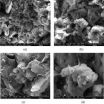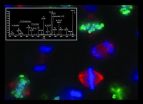(Press-News.org) The uplifting effects of energy drinks are well advertised, but a new report finds consumption among teenagers may be linked with poor mental health and substance use.
Researchers are calling for limits on teen's access to the drinks and reduction in the amount of the caffeine in each can.
The paper by researchers at the University of Waterloo and Dalhousie University, published in Preventive Medicine, found that high school students prone to depression as well as those who are smoke marijuana or drink alcohol are more likely to consume energy drinks than their peers.
"While it remains unclear why these associations exist, the trend is a concern because of the high rate of consumption among teenagers," said Sunday Azagba, a researcher at the Propel Centre for Population Health Impact at the University of Waterloo and lead author on the paper. "These drinks appeal to young people because of their temporary benefits like increased alertness, improved mood and enhanced mental and physical energy."
Among the 8210 high school students surveyed, nearly two thirds reported using energy drinks at least once in the past year, with more than 20 percent consuming them once or more per month. Younger high school students were more likely to consume energy drinks than older ones.
"Marketing campaigns appear designed to entice youth and young adults," said Azagba. "It's a dangerous combination, especially for those at an increased risk for substance abuse."
Energy drinks have been associated with a number of negative health effects, including cardiovascular symptoms, sleep impairment and nervousness and nausea. The side effects are caused by the beverages' high concentration of caffeine.
"Given the negative effects of excessive caffeine consumption as well as the coincident occurrence of the use of energy drinks and other negative behaviors in teens, the trends we are seeing are more than cause for concern," said Azagba.
In recent years energy drink sales have skyrocketed, with sales forecasted to reach $20 billion in 2013 in the United States alone.
"In our opinion, at the very least steps should be taken to limit teens' access to energy drinks, to increase public awareness and education about the potential harms of these drinks and to minimize the amount of caffeine available in each unit," said Azagba. "This won't eliminate the problem entirely, but steps like these can help mitigate harm to our youth that appears to be associated with consumption of these drinks. This is something we need to take seriously. Change won't happen without a concerted effort."
The study was based on data from the 2012 Student Drug Use Survey, consisting of a representative sample of junior and senior high school students from three provinces in Atlantic Canada.
INFORMATION: END
Energy drinks linked to teen health risks
2014-03-06
ELSE PRESS RELEASES FROM THIS DATE:
Computational tool offers new insight into key biological processes
2014-03-06
Researchers from North Carolina State University have developed a computational tool designed to guide future research on biochemical pathways by identifying which components in a biological system are related to specific biochemical processes, including those processes responsible for gene expression, cell signaling, stress response, and metabolism.
"Our goal was to identify modules, or functional units, which are critical to the performance of the biochemical pathways that govern a host of biological processes," says Dr. Cranos Williams, an assistant professor of electrical ...
Why soil changes color in air
2014-03-06
According to the results of a recent study, soil color changes in the atmosphere basically through the oxidation of chemical substances in the soil. The fundamental mechanism is the remodeling effect of micro-structures because of motion effects and chemical reactions of the water–soil–electrolyte–atmosphere system leading to the coupling and transforming of soil particles. The above provides a theoretical foundation for the assessment and forecast of the stability of the geotechnical environment.
Nowadays, with increasing focus on the harmful effects of fog and haze ...
Eating red and processed meat -- what do scientists say
2014-03-06
Oxford, March 6, 2014 -- Recent reports warn about a link between eating red and processed meat and the risk of developing cancer in the gut. These reports have resulted in new nutritional recommendations that advise people to limit their intake of red and processed meats. A recent perspective paper, authored by 23 scientists, published in the latest issue of journal Meat Science underlines the uncertainties in the scientific evidence and points to further research needed to resolve these issues and improve the foundation for future recommendations on the intake of red ...
Waiting for a donor heart: Motion prolongs survival
2014-03-06
For many people with advanced cardiac insufficiency, a heart transplant may be their only hope. e. But waiting for a donor heart to come along is a race against time. Patients who remains active and stay in good shape psychologically can significantly increase their chances of surviving this period. . Anxiety-ridden, depressive and passive patients, on the other hand, run the risk of further serious deterioration of their heart's ability to function.
This is what health psychologists at the universities of Luxembourg, Mainz and San Francisco found in a study conducted ...
Offshore dispersant data and decisions
2014-03-06
COLUMBIA, S.C. — Dispersants are often used in oil spill responses because they may mitigate the environmental impacts of the spill by moving the oil from the water surface into the water column enhancing its biodegradation. While this process helps reduce the likelihood of oil exposure to marine wildlife such as seabirds and marine mammals, aquatic toxicity on marine communities from the dispersant and the chemically dispersed oil needs to be considered more carefully.
Scientists at Research Planning, Inc. and HDR Ecosystem Management evaluated the standard toxicity ...
Researchers identify a critical link between obesity and diabetes
2014-03-06
BOSTON – It's by now well established that obesity is a major risk factor for diabetes. But what exactly is it about extra body fat that leads to insulin resistance and blood glucose elevation, the hallmarks of diabetes?
Over the past several years, Beth Israel Deaconess Medical Center (BIDMC) endocrinologist Barbara Kahn, MD, has developed a large body of research suggesting that a molecule called retinol binding protein 4 (RBP4) plays a key role in the process. Kahn's lab was the first to show that elevated levels of RBP4 – previously known only for its role as a ...
Strategies on the Internet to discredit generic drugs
2014-03-06
Although there is widespread consensus among the scientific community that the composition of generic drugs is identical to that of brand name drugs, this is not the case among the public. In a four-year study of over 3,000 opinions on Spanish web pages, researchers at the National University of Distance Education (UNED) of Spain have identified communication strategies aimed at creating risk perceptions about generic drugs, which may influence the low usage of these drugs.
Generic drugs, which are copies of brand name drugs whose patent has expired, have exactly the ...
New research could help make 'roll-up' digital screens a reality for all
2014-03-06
Researchers from the University of Surrey worked together with scientists from Philips to further develop the 'Source-Gated-Transistor' (SGT) - a simple circuit component invented jointly by the teams.
Previously, they found that the component could be applied to many electronic designs of an analog nature, such as display screens. Through this current study, researchers have now shown that SGTs can also be applied to next-generation digital circuits.
SGTs control the electric current as it enters a semiconductor, which decreases the odds of circuit malfunction, improves ...
Researchers capture 'most complete' picture of gene expression in cancer cell cycle
2014-03-06
Uncontrolled cell growth and division is a hallmark of cancer. Now a research project led by the University of Dundee has provided the most complete description to date of the gene activity which takes place as human cells divide.
Researchers have managed to gather data which details the behaviour of protein molecules encoded by over 6000 genes in cancer cells, as they move through the cell cycle. The team has used advances in technology and data analysis to study how genes work over time in cancer cells, as opposed to capturing a `snapshot' of activity – a leap forward ...
Sudden cardiac death: Genetic disease ARVC more common than hitherto assumed
2014-03-06
The genetic disease ARVC leads to sudden cardiac death and is more common than it has been hitherto assumed. This is reported by an international team of researchers headed by Prof Dr Hendrik Milting from the Heart and Diabetes Center NRW in the "European Heart Journal". The molecular biologist working at the Ruhr-Universität's clinic in Bad Oeynhausen revealed that all families who are known to be affected by the disease share the same genetic origin. There must be other families in Europe who also carry the genetic mutation but who are not yet known.
Mutation initially ...


